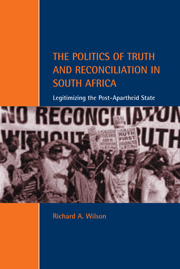Book contents
- Frontmatter
- Contents
- List of Acronyms and Glossary
- Maps
- Preface and Acknowledgements
- 1 Human Rights and Nation-Building
- PART I Human Rights and Truth
- PART II Reconciliation, Retribution and Revenge
- 4 Reconciliation Through Truth?
- 5 Reconciliation in Society: Religious Values and Procedural Pragmatism
- 6 Vengeance, Revenge and Retribution
- 7 Reconciliation with a Vengeance
- 8 Conclusions: Human Rights, Reconciliation and Retribution
- Notes
- Bibliography
- Index
6 - Vengeance, Revenge and Retribution
Published online by Cambridge University Press: 10 November 2009
- Frontmatter
- Contents
- List of Acronyms and Glossary
- Maps
- Preface and Acknowledgements
- 1 Human Rights and Nation-Building
- PART I Human Rights and Truth
- PART II Reconciliation, Retribution and Revenge
- 4 Reconciliation Through Truth?
- 5 Reconciliation in Society: Religious Values and Procedural Pragmatism
- 6 Vengeance, Revenge and Retribution
- 7 Reconciliation with a Vengeance
- 8 Conclusions: Human Rights, Reconciliation and Retribution
- Notes
- Bibliography
- Index
Summary
ANTONY:
And Caesar's spirit, ranging for revenge,
With Ate by his side, come hot from hell,
Shall in these confines, with a monarch's voice,
Cry ‘Havoc!’ and let slip the dogs of war,
That this foul deed shall smell above the earth
With carrion men, groaning for burial.
ALL THE PLEBEIANS:
Revenge! About! Seek! Burn! Fire! Kill! Slay!
Let not a traitor live!
Shakespeare (Julius Caesar III, i; III, ii)The spirit of revenge: my friends, that up to now, has been mankind's chief concern; and where there was suffering, there was always supposed to be punishment.
Friedrich Nietzsche (Thus Spoke Zarathustra, 1969:162)So far this book has examined how the reconciliation of human rights talk becomes meaningful for some members of its targeted audience; this chapter and the next explore ideas and practices of retribution and revenge. The high visibility of a revenge ethic in South Africa created a counterpoint to the TRC's vision of national redemption and forgiveness, and highlighted the disjunctures between formal and informal justice which I characterize as relational discontinuities. During acts of violent punishment on the streets and in cases heard in township courts, local actors draw distinctions between humanitarian and Christian values of forgiveness, reconciliation and redemption on the one hand, and vengeful notions of punishment on the other. At the level of local justice practices, this results in a rejection of the TRC's project in favor of more punitive and vengeful responses to ‘resolving’ past conflicts and violations under apartheid.
- Type
- Chapter
- Information
- The Politics of Truth and Reconciliation in South AfricaLegitimizing the Post-Apartheid State, pp. 156 - 187Publisher: Cambridge University PressPrint publication year: 2001

